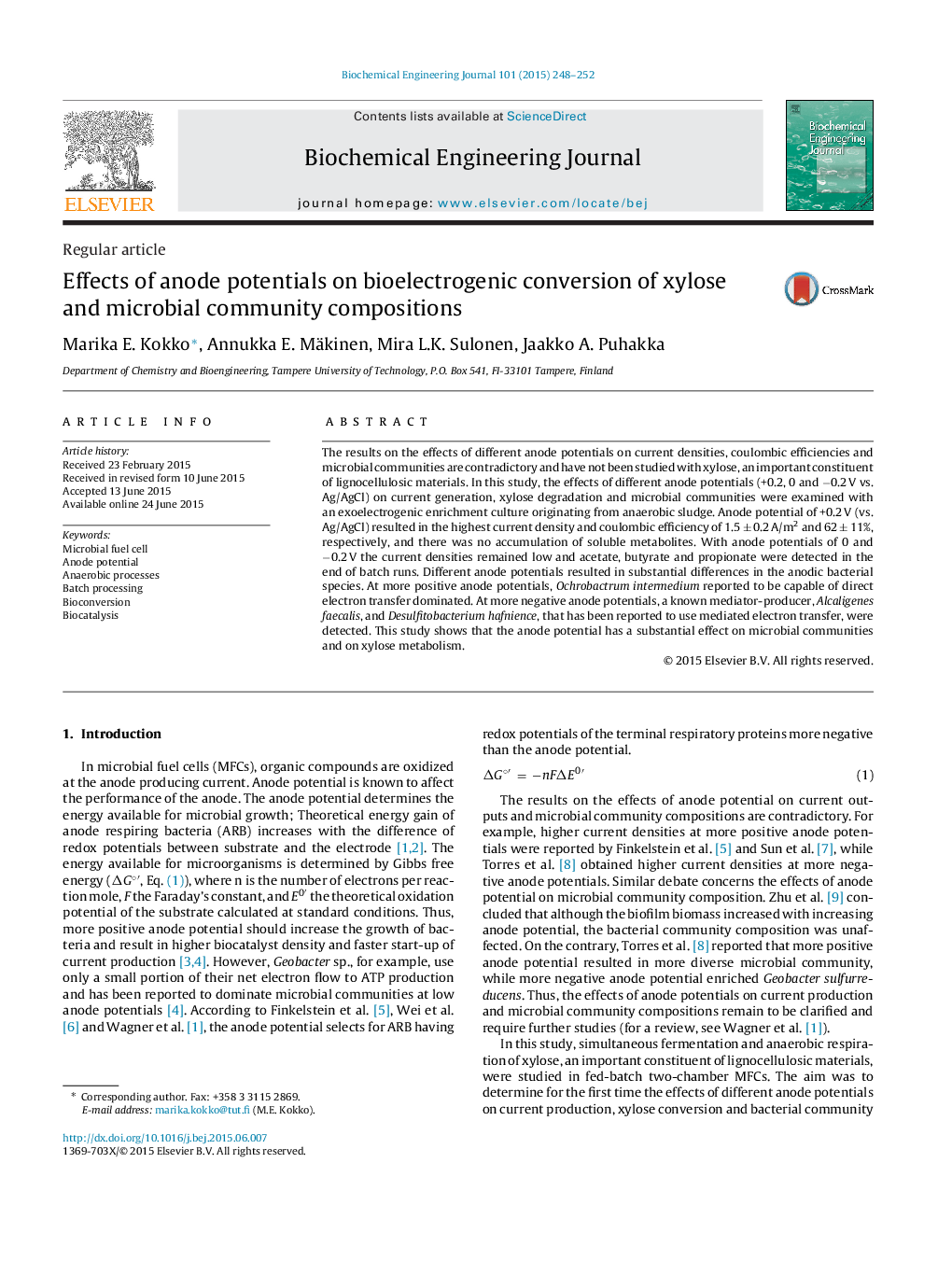| کد مقاله | کد نشریه | سال انتشار | مقاله انگلیسی | نسخه تمام متن |
|---|---|---|---|---|
| 2861 | 137 | 2015 | 5 صفحه PDF | دانلود رایگان |
• Effects of anode potentials on current production with mixed culture is studied.
• Different anode potentials affect xylose metabolism and microbial communities.
• The highest current densities are obtained with the most positive anode potential.
• Bacterial species producing current differ at high and low anode potentials.
The results on the effects of different anode potentials on current densities, coulombic efficiencies and microbial communities are contradictory and have not been studied with xylose, an important constituent of lignocellulosic materials. In this study, the effects of different anode potentials (+0.2, 0 and −0.2 V vs. Ag/AgCl) on current generation, xylose degradation and microbial communities were examined with an exoelectrogenic enrichment culture originating from anaerobic sludge. Anode potential of +0.2 V (vs. Ag/AgCl) resulted in the highest current density and coulombic efficiency of 1.5 ± 0.2 A/m2 and 62 ± 11%, respectively, and there was no accumulation of soluble metabolites. With anode potentials of 0 and −0.2 V the current densities remained low and acetate, butyrate and propionate were detected in the end of batch runs. Different anode potentials resulted in substantial differences in the anodic bacterial species. At more positive anode potentials, Ochrobactrum intermedium reported to be capable of direct electron transfer dominated. At more negative anode potentials, a known mediator-producer, Alcaligenes faecalis, and Desulfitobacterium hafnience, that has been reported to use mediated electron transfer, were detected. This study shows that the anode potential has a substantial effect on microbial communities and on xylose metabolism.
Journal: Biochemical Engineering Journal - Volume 101, 15 September 2015, Pages 248–252
